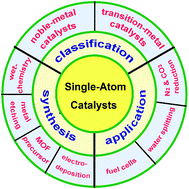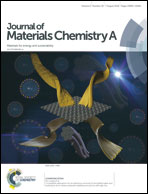Recent progress in single-atom electrocatalysts: concept, synthesis, and applications in clean energy conversion
Abstract
Electrochemical energy plays a key role in direct conversion into value-added products by using renewable electricity. Single-atom catalysts (SACs) can maximize the efficiency of metal-atom utilization, thus achieving high activity, stability, and selectivity in electrocatalytic reactions. SACs can overcome some limitations of bulk materials in electrocatalytic applications. In this review, we introduce SACs consisting of various single metal atoms, including noble and transition metals, anchored on various supports, such as metals, metal oxides, porous carbon, graphene, and g-C3N4. These catalysts possessed various binding modes between the single atoms and anchoring sites. We also review and highlight novel and promising methods to obtain SACs. Such methods include wet chemistry, metal etching, electrodeposition, and metal–organic-framework-derived methods. We also focused on the electrocatalytic applications of SACs in representative electrochemical applications such as oxygen reduction, hydrogen evolution, oxygen evolution, carbon dioxide reduction, and nitrogen reduction reactions. Significantly, the electrocatalytic performance can be tuned by engineering the structure of SACs in terms of binding mode, coordination number, and dispersion tendencies. Finally, we provide perspectives on the design of SACs for future applications in various electrocatalytic processes in energy conversion.

- This article is part of the themed collections: Recent Review Articles and International Year of the Periodic Table : Single Atoms as Active Catalysts


 Please wait while we load your content...
Please wait while we load your content...